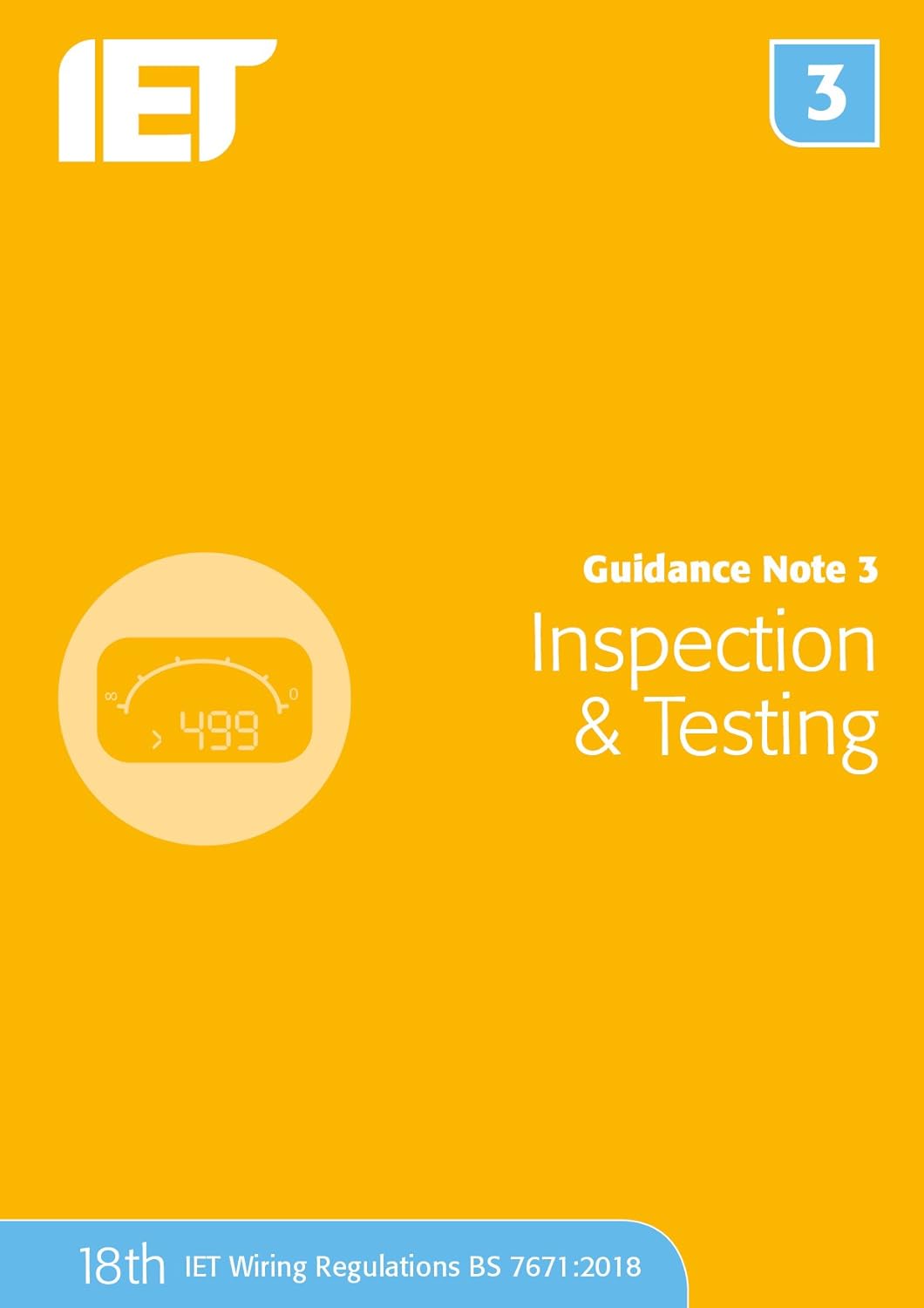
Guidance Note 3: Inspection & Testing (Electrical Regulations)
FREE Shipping
Guidance Note 3: Inspection & Testing (Electrical Regulations)
- Brand: Unbranded

Description
BS EN 61008 requires RCDs having I Δn > 10 mA are subjected to 2000 operating cycles, each operating cycle consisting of a closing operation followed by an opening operation. Then during fault, is the CPC already hot as well or just the live cores - probably depends on the arrangement - steel conduit may have a cold CPC, for T and E the CPC is more thermally in contact with the live cores. A typical spec is more like this maker's data for the LTW 425 - and that is a dedicated loop tester, not a compromised design to make a multi function tester all fit in one box, they tend to be worse. Notices: periodic inspection and testing) now contains an exception for domestic (household) premises in certain situations. Table 1 summarizes the various types of RCD referred in BS 7671:2018+A2:2022 and their resilience to DC components.
The Regulations apply to the design, erection and verification of electrical installations, also additions and alterations to existing installations. This means that the test instrument needs to be set to the Type AC RCD setting regardless of RCD Type. If the consumer unit is located under a wooden staircase or within a sole route of escape from the premises, a C3 classification code is recommended.Each manufacturer’s instrument is different but changing the RCD Type is usually selected by pressing the relevant ‘function’ button on the instrument and the RCD Type symbol will change accordingly: see Figure 2. Rewireable or semi-enclosed fuses to BS 3036 as they are referred to in BS 7671:2018+A1:2020, are indeed still permitted providing the appropriate correction factor (0. However, a note under the table indicates that earth faults are of negligible impedance and it follows that disconnection times would be commensurately higher since a value of, for example, a residual current of 60 mA would be expected to provide a disconnection time of 150 ms and 40 ms (0. For RCDs, part of the product standard test procedure is to ensure a minimum number of operating cycles. The use of AFDDs does not obviate the need to apply one or more measures provided in other clauses in this standard.
Risk assessment method) has been deleted and Annex A443 (examples of calculated risk level CRL for use of SPDs) has also been deleted. All digital Fluke and Megger loop impedance meters I have used are accurate enough to tell the difference between 1. I believe Megger recommends as a general rule, taking 3 readings when doing loop impedance measurements and then using the average value as some supplies can be quite volitile in their waveforms Therefore accuracy to more than 2 decimal places is often very hard to justify in the field as opposed to on paper.The guide will be useful for apprentices and trainees carrying out the calculations necessary for a basic installation and has been fully updated to BS 7671:2018+A2:2022. In addition, the Annex to 722 has been redrafted and includes guidance on indent (iii) of Regulation 722. of BS 7671:2018+A2:2022 states that the appropriate RCD shall be selected according to the presence of DC components and AC frequencies.
- Fruugo ID: 258392218-563234582
- EAN: 764486781913
-
Sold by: Fruugo
